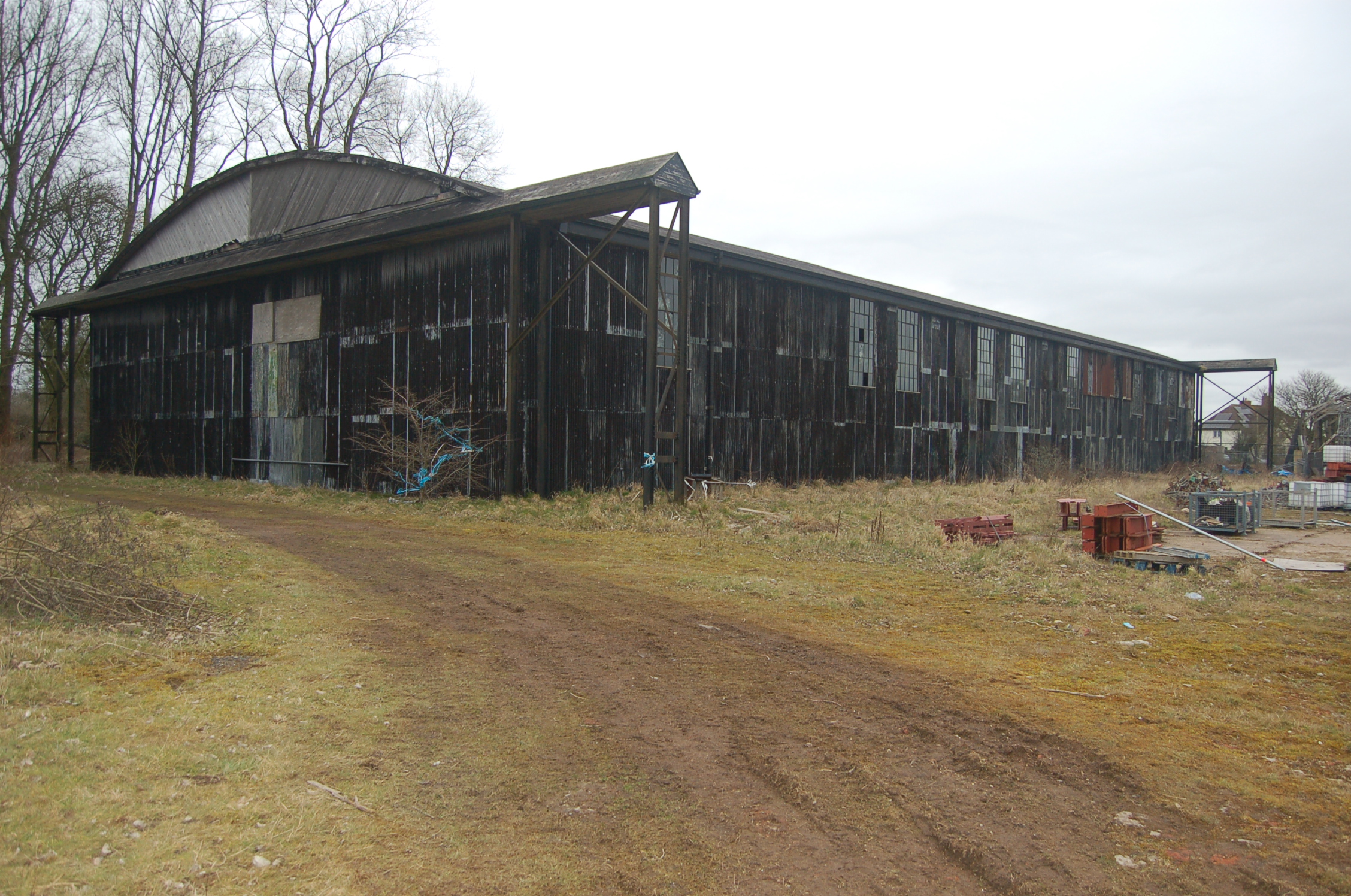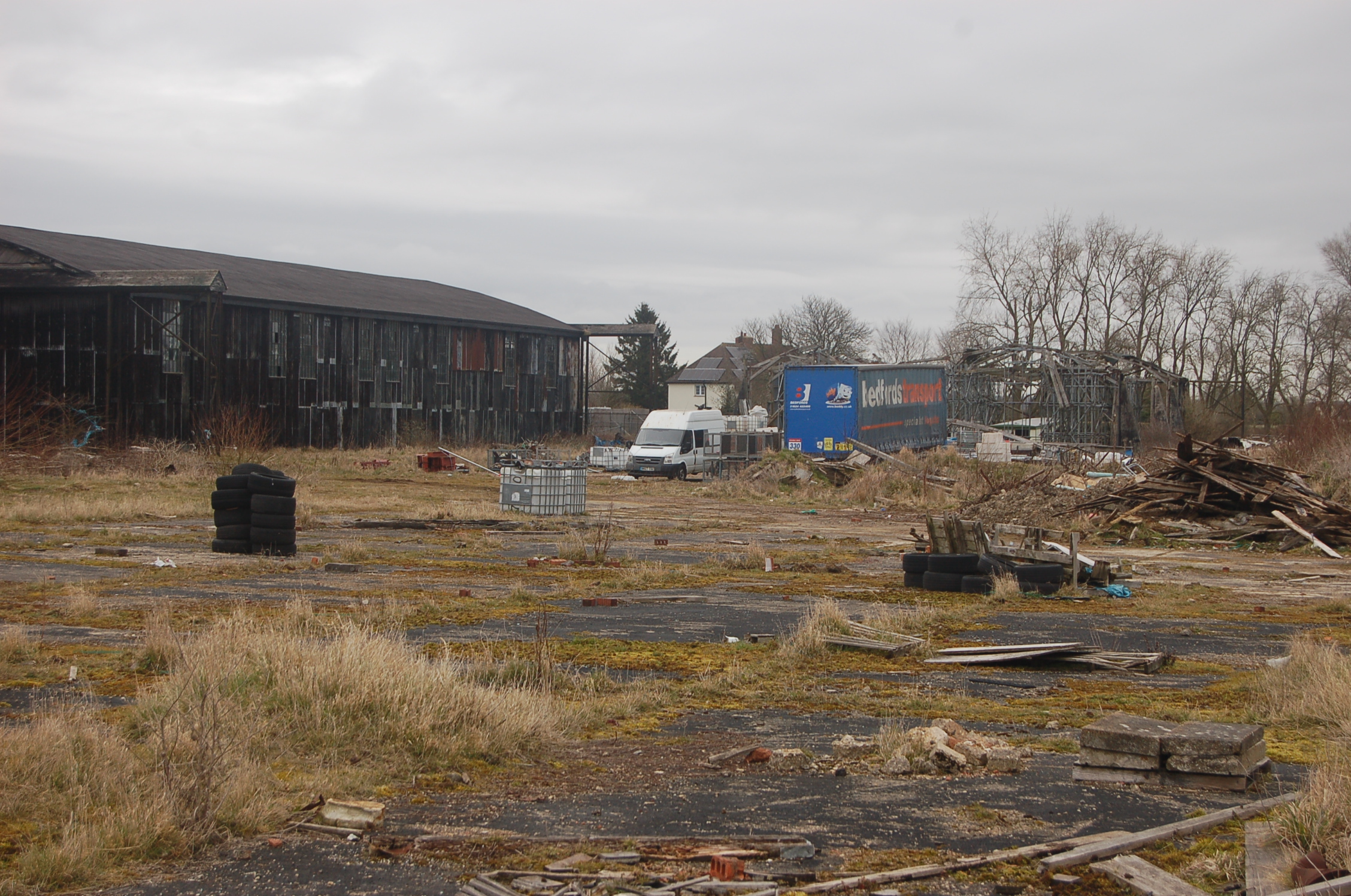Yatesbury
Starting in March 1918, 2nd Lt C.E. Gregory RFC (‘Greg’) learnt to fly with 17 Training Squadron RFC, which at the time was based at Yatesbury, near Marlborough, in Wiltshire.

A zoomable, contemporary OS map of Yatesbury and the site of its former airfield (marked).
There were in fact two airfields at Yatesbury for the last two years of the First World War:
“In 1916, the Royal Flying Corps (RFC) developed two airfields at Yatesbury specialising in training Corps Reconnaissance pilots. Two camps were established either side of the minor road from the A4 to the village itself: the West camp comprised the officers’ and men’s quarters with the usual facilities and three large hangars, while the East camp was adjacent to the A4 and had hangars and workshops. The airfields opened in November 1916 with No. 55 Reserve Squadron arriving from Filton, equipped with the Avro 504A and the Scout D.” [Vieve Forward at http://www.geograph.org.uk/photo/4282619; cc by-sa/2.0)]
The former Yatesbury airfield is now mostly farmland. It lies on the high ground of the Wiltshire downs with a broad horizon punctuated by the eye-catching Landsdowne Monument. One of the First World War hangers has been restored and is now a listed building. It’s a structure which is something of a rarity. The area occupied by buildings dating from both the First World War and the Second World War is being prepared for redevelopment.
Restored hangar at Yatesbury, in the context of the development site. Images: Andrew Sheard. Thanks to Jamal Khanfer of the developers KK Partners Ltd for allowing access in March 2018 for these photos to be taken.
At Yatesbury, Greg first trained in BE2es and DH.6s, and then switched to RE8s, his future squadron’s aircraft.
By this stage of the war, the RFC had sharpened up its act as far as pilot training was concerned. It had had to: the losses resulting from the air support operations during the Battle of Arras in April 1917 (‘bloody April’) were unacceptable. Inadequately trained pilots doing reconnaissance work in stable but poorly manoeuvrable aircraft such as the BE2c were no match for the more agile aircraft of the Deutsche Luftstreitkräfte, particularly von Richthofen’s Jasta 11. The RFC’s response was not only to procure better aircraft but also to put flight training on a more professional footing, from which Greg will have benefitted.
While Greg was training at Yatesbury, on 1 April 1918 the Royal Air Force was formed from the Royal Flying Corps and the Royal Naval Air Service. So Greg began his training in the RFC and completed it as an RAF pilot.
Hursley Park/Worthy Down
In May 1918, Greg’s training was completed with a course at the Artillery & Infantry Co-operation School (formerly known as the Wireless & Observers School) at Hursley Park near Winchester in Hampshire, now the home of IBM UK.

The airfield for Hursley Park was to the north of Winchester at Worthy Down.

Thanks to David Key, of the highly informative History of Hursley Park website, for the following explanation as to how that somewhat inconvenient arrangement came about:
“The Artillery & Infantry Co-operation School had, as the Wireless & Observers School, moved to Hursley Park from Brooklands, from where they had been forced out to make way for increased aircraft production by the Royal Aircraft Factory. This was part of a wider move that involved the creation of an airfield a few miles to the north of Winchester at the old race track of Worthy Down. However, although the airfield was serviceable by October 1917 the associated huts etc. were not. So the camp, where the course participants slept, ate and did course work, was in the old Hursley Park Camp that had been built for Kitchener’s army in 1914/1915, a few miles to the south of Winchester.
So, for flying, they were driven the nine miles north to Worthy Down and then back again! To quote an Observer on the course, it was ‘a bloody stupid arrangement’.”
From Hursley Park, or more correctly Worthy Down, Greg flew RE8s – the same aircraft that he would fly on the Western Front.
Header image: Greg in the student’s seat of an Airco DH.6 aircraft of 19 Training Squadron RFC at Yatesbury, Greg’s War Collection.




